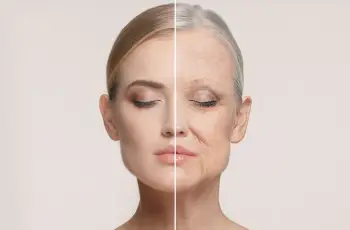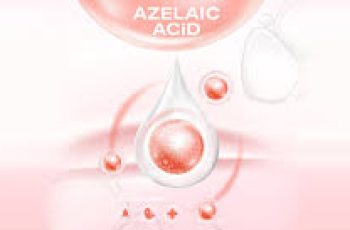
### Can Vitamin C Be Combined with Azelaic Acid?
Yes, **vitamin C** and **azelaic acid** can be used together in your skincare routine, and they make a powerful combination! Both ingredients offer unique benefits for the skin, and when used correctly, they can complement each other in treating a variety of skin concerns, including **hyperpigmentation**, **uneven skin tone**, and **acne**.
Let’s explore why these two ingredients work well together, how to incorporate them into your routine, and things to watch out for.
### What Is Azelaic Acid?
Azelaic acid is a naturally occurring dicarboxylic acid found in grains like barley and wheat. It’s known for its **antibacterial, anti-inflammatory**, and **exfoliating** properties. Azelaic acid is widely used in skincare to treat:
– **Acne** and **rosacea** due to its ability to unclog pores and reduce inflammation.
– **Hyperpigmentation** and **dark spots**, as it helps to brighten the skin and even out skin tone.
– **Post-acne scarring**, where it helps to fade dark spots left behind by breakouts.
It is a gentle exfoliator, making it a great option for sensitive or reactive skin, as it is less likely to cause irritation compared to other acids like AHAs or BHAs.
### What Is Vitamin C?
Vitamin C, also known as **ascorbic acid**, is a potent antioxidant that plays a key role in fighting **free radical damage** from environmental stressors like pollution and UV exposure. In skincare, vitamin C is beloved for its ability to:
– **Brighten** the skin and reduce **dark spots** or **hyperpigmentation**.
– **Stimulate collagen production**, which can help reduce the appearance of fine lines and wrinkles.
– Provide an overall **healthy glow** by neutralizing oxidative stress that can cause skin aging.
Vitamin C is often used in the morning to protect the skin from daily environmental damage, but it can also be used at night in some cases.
### Why Can Vitamin C and Azelaic Acid Be Combined?
Both **vitamin C** and **azelaic acid** offer significant benefits for reducing **hyperpigmentation** and promoting an even skin tone, which makes them a complementary pair. They both:
– **Target dark spots** and **uneven skin tone**: Vitamin C helps brighten the skin, while azelaic acid works to reduce pigmentation and prevent the formation of new spots.
– **Have antioxidant properties**: Both are antioxidants, helping to protect the skin from damage caused by UV exposure, pollution, and other environmental stressors.
– **Work well with sensitive skin**: Azelaic acid is known for being gentle, and vitamin C, while potentially irritating in some forms, can be well tolerated by most skin types when formulated properly.
### How to Use Vitamin C and Azelaic Acid Together
To get the most out of these two powerful ingredients, it’s important to use them correctly and ensure your skin builds tolerance to them. Here’s how to layer them in your skincare routine:
1. **Morning: Vitamin C**
Vitamin C is often used in the morning due to its antioxidant properties, which help protect the skin from environmental stressors throughout the day. Start with a **vitamin C serum** after cleansing and before applying sunscreen. This will help brighten your skin and protect it from UV damage.
2. **Evening: Azelaic Acid**
In the evening, apply **azelaic acid** after cleansing. Azelaic acid helps with acne, hyperpigmentation, and redness. You can use it as a serum or cream depending on your product’s formulation. It’s gentle enough for most skin types and can be used as a leave-on treatment overnight.
#### Tip: **Use at Different Times of Day**
To minimize any risk of irritation or potential interactions, consider using **vitamin C in the morning** and **azelaic acid in the evening**. This allows each ingredient to work without interfering with the other and helps your skin tolerate both better over time.
### What About Layering Vitamin C and Azelaic Acid at the Same Time?
Some people may prefer to layer **both ingredients together** in the same routine, and this is generally safe as long as your skin tolerates it. Here’s how to do it:
1. **Cleanse your skin** and apply **vitamin C serum**.
2. Let the vitamin C absorb for a minute or two.
3. Follow with **azelaic acid** (serum or cream) after the vitamin C has fully absorbed.
However, if you have **dry**, **sensitive**, or **reactive skin**, it’s best to **start slowly** and monitor your skin’s response. Using them at different times of day (morning for vitamin C, evening for azelaic acid) can be an easier way to integrate both into your routine without overwhelming your skin.
### Things to Keep in Mind
– **Start Slowly**: If both vitamin C and azelaic acid are new to your routine, **start slowly** to allow your skin to build tolerance. Introduce each ingredient one at a time, using it every other day to start, and gradually increase the frequency as your skin adjusts.
– **Patch Test**: As with any new skincare products, it’s important to do a **patch test** 24 hours before applying them to your face. This will help ensure that you don’t have an adverse reaction to either ingredient.
– **Hydrate Your Skin**: Both vitamin C and azelaic acid can be drying, especially if you have sensitive skin. Make sure to follow up with a **moisturizer** to keep your skin hydrated and prevent any dryness or irritation.
– **Sunscreen**: **Vitamin C** can make your skin more sensitive to the sun, so always apply **broad-spectrum SPF** during the day. Azelaic acid can also be mildly irritating to some skin types when exposed to the sun, so sun protection is important.
### Conclusion: Is Vitamin C or Azelaic Acid Better?
Both **vitamin C** and **azelaic acid** are excellent skincare ingredients, but they work best in combination to tackle different skin concerns. If you’re looking to brighten your complexion, reduce hyperpigmentation, and protect your skin from environmental damage, **vitamin C** is a must-have, especially in the morning. **Azelaic acid**, on the other hand, is perfect for targeting acne, rosacea, and post-inflammatory hyperpigmentation, and works well at night.
While both ingredients have overlapping benefits, they are **not interchangeable**. The combination of the two can be particularly powerful, offering both immediate and long-term improvements in skin tone, texture, and clarity. For the best results, **use them at different times of day** and give your skin time to adjust.
In summary, yes, **vitamin C and azelaic acid can be combined**! Just make sure to introduce them gradually into your routine, use them at different times of day, and always apply sunscreen in the morning.


